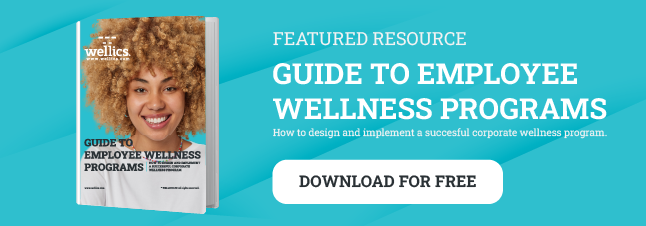We don’t normally think of an office as being an unsafe workplace. However, office work can pose a serious hidden risk of musculoskeletal disorders (MSDs) due to repetitive motions, sedentary workdays, eye strain, and numerous other factors.
According to the Bureau of Labor Statistics, MSDs account for 30% of workplace injuries, making them the largest cause of workers’ compensation claims in the U.S. Workplace ergonomics provides a way to curb the rates of common workplace injuries, while also optimizing the quality of life and comfort among employees.
This guide to how to improve workplace ergonomics provides an overview of how organizations can enhance their working environments to reduce MSDs and general pain and discomfort in office workers to increase employee wellness.
What Is Workplace Ergonomics?
Ergonomics is an approach to healthy mobility, seating, and overall posture in the workplace. The traditional workplace ergonomics definition is that a person’s work environment should be adapted to their body, not the other way around.
By fitting a workspace to an individual’s health needs, organizations can increase employee well-being, improve productivity, as well as drive numerous other business outcomes.
Workplace ergonomics aims to identify repetitive behaviors and motions or positions that lead to musculoskeletal discomfort and other health issues, including eye strain, headaches, and more. Today, office ergonomics in the workplace is also focused on increasing movement throughout the day and reducing the harmful effects of extended sedentary work.
Why Is Ergonomics Important in the Workplace?
Workplace ergonomics is an essential preventive measure that employers can take to help foster better employee health. By adopting good workplace ergonomics, organizations benefit from healthier, more productive employees.
Some of the top benefits of ergonomics in the workplace include:
- Prevent workplace injuries, like carpal tunnel syndrome
- Improve focus and productivity levels
- Enhance quality of work output
- Boost employee engagement
- Reduce absenteeism and turnover
- Manage healthcare expenditures
- Decrease workers’ compensation claims
- Create a safer workplace
Workers who follow proper ergonomic practices have a lower risk of injury, which helps reduce healthcare expenses and other costs associated with lost productive time.
Investing in the right ergonomic solutions can also improve workplace culture. Organizations that prioritize ergonomics demonstrate concern for employee safety and well-being, leading to better engagement, increased retention, and potentially improved talent recruitment.
8 Workplace Ergonomics Tips
Organizations can take certain steps to achieve good workplace ergonomics, including evaluating how employees work and acquiring the right ergonomic solutions.
Practice good ergonomics in the workplace by following the below tips for better comfort and safety in the office:
1. Conduct a workplace ergonomics assessment: Before implementing an ergonomics strategy, managers must first understand the needs of their workers. A workplace ergonomics assessment can help you identify critical areas for improvement, including the types of ergonomic improvements that would help in specific worker roles.
2. Invest in the right office furniture and equipment: Once you’ve identified the risks of specific groups of employees, you can begin looking for solutions to improve their work behaviors. Consider ergonomic office furniture, like standing desks, chairs that promote a neutral posture, or monitor risers that keep the head and neck aligned and prevent straining. Ergonomic equipment for the office also includes products like LED lighting, a computer mouse that fits the shape of the hand, and a keyboard that’s curved or split to accommodate relaxed shoulders and arms.
3. Build an ergonomic workstation: It’s essential to design a workstation that accommodates the type of work an employee spends most of their time doing. For example, if workers spend most of their days at a desk, then a workstation should promote good sitting posture, comfort, and concentration on computer work. The ideal workstation is set up so that everything that’s needed is within arm’s reach to prevent repetitive reaching and straining across or away from the body.
4. Factor in varying heights: Ergonomic workstations must be designed for each individual worker and their body proportions, including their height. The more office furniture can be adjusted, the better it can be adapted to each person. Smaller or shorter people need to be able to raise their chair height, while taller people benefit from being able to raise their computer monitors. Additional adjustments like lumbar support or footrests can help address specific types of conditions, such as sciatica or low back pain.
5. Promote varying work positions: Though ergonomics in the workplace has existed for many decades, it’s only in recent years that occupational health experts have started promoting the ability to vary working positions throughout the day to prevent prolonged sitting. Adjustable standing desks, also known as sit-stand desks, are a way to encourage workers to stand more throughout the day, which helps boost circulation and alleviate compression in the low back.
6. Address environmental ergonomics: Consider how the workplace environment and ergonomics are connected. Ergonomics extends beyond office furniture and computer equipment to how the surrounding office environment is designed. Light, sound, and air quality are critical to comfort. Lighting should replicate daylight and maximize natural light. Workplaces should also try to reduce the amount of noise pollution, echoes, and other disruptive sounds by having proper acoustic insulation. Adequate ventilation and ample fresh air also improve alertness.
7. Encourage movement breaks: When developing your organization's wellness policy, be aware of the link between workplace posture and ergonomics. Encouraging movement breaks can help reverse some of the posture problems related to prolonged sitting, like hunching and slouching. During movement breaks, workers are encouraged to do certain stretches to help lengthen the muscles in the back, shoulders, neck, and chest, and to reduce eye strain and headaches.
8. Educate about remote ergonomics: If you have staff working remotely, it can be challenging to encourage workplace ergonomics in the same way you would in a traditional office. To help remote workers get the same support as workers at a central office, provide employees with workplace ergonomics training to set up their remote workspace in an ergonomic way. For example, many organizations provide reimbursements on office furniture and equipment. Managers can also check in regularly with remote workers to ensure they’re working safely and comfortably.
Workplace Ergonomics and Employee Well-Being
By improving workplace ergonomics, organizations demonstrate that they prioritize worker well-being. A healthy working environment is one of the pillars of employee wellness, and improving workplace ergonomics can help workers thrive in their roles.
Employee wellness programs like Wellics help organizations address key issues like working environment and ergonomics, providing actionable solutions so that businesses can meet their productivity, culture, and engagement goals.
Using the Wellics workplace wellness platform, your organization can measure how improving ergonomics leads to a boost in productivity, engagement, well-being, or any other custom metric that's important to your organization. Leverage the power of the Wellics platform to monitor the results of optimizing workplace well-being. Take a tour of the Wellics employee wellness platform today or book a demo.
Originally published May 17, 2022 - 10:36 AM, updated September 11, 2024
Sources
- https://www.bls.gov/iif/oshwc/case/msds.htm
- https://ehs.unc.edu/workplace-safety/ergonomics/
- https://www.mayoclinic.org/healthy-lifestyle/adult-health/in-depth/office-ergonomics/art-20046169









